How Can One Type Of Rock Change To Another
Top ten inventions that inverse the globe

Humans take dreamed upwardly and created some amazing — and sometimes unorthodox — inventions. From the moment someone bashed a rock on the basis to make the kickoff precipitous-edged tool, to the debut of the wheel to the development of Mars rovers and the Internet, several key advancements stand out as particularly revolutionary. Here are our top picks for the most important inventions of all time, along with the scientific discipline backside the invention and how they came about.
The cycle
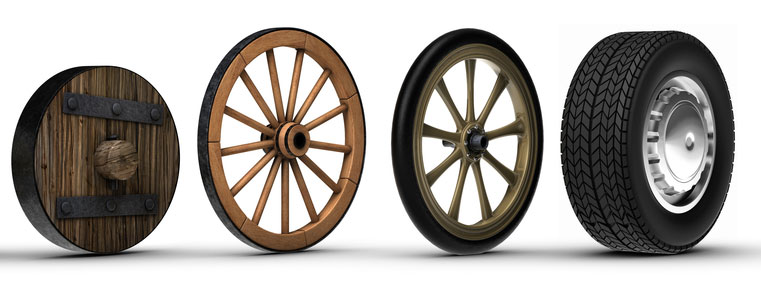
Before the invention of the wheel in 3500 B.C., humans were severely limited in how much stuff we could transport over land, and how far. The wheel itself wasn't the most hard office of "inventing the bike." When it came time to connect a non-moving platform to that rolling cylinder, things got tricky, according to David Anthony, a professor of anthropology at Hartwick College.
"The stroke of brilliance was the bike-and-axle concept," Anthony previously told Live Science. "But then making it was as well difficult." For example, the holes at the centre of the wheels and the ends of the fixed axles had to be nearly perfectly round and smooth, he said. The size of the axle was as well a critical factor, equally was its snugness inside the hole (not as well tight, but not besides loose, either).
The hard work paid off, big time. Wheeled carts facilitated agriculture and commerce by enabling the transportation of goods to and from markets, equally well as easing the burdens of people travelling great distances. Now, wheels are vital to our fashion of life, found in everything from clocks to vehicles to turbines.
The nail
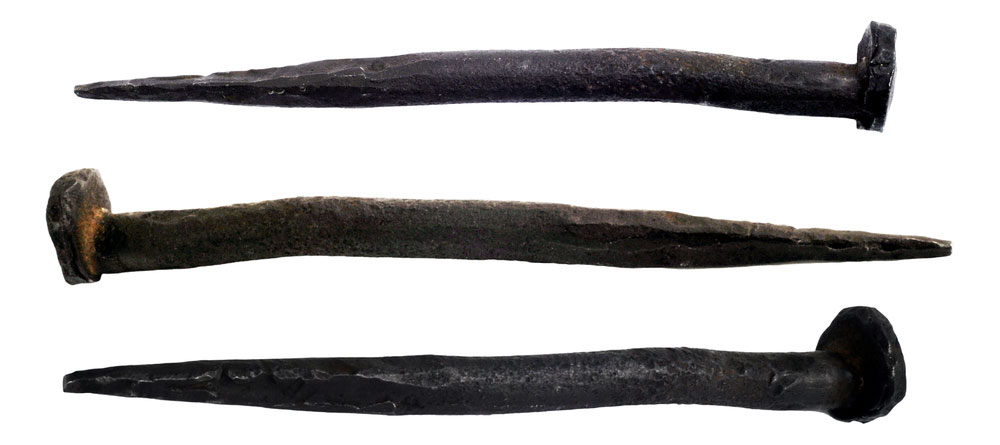
This fundamental invention dates back more than 2,000 years to the Ancient Roman period and became possible only after humans developed the ability to cast and shape metal. Previously, wood structures had to be built by interlocking adjacent boards geometrically a much more arduous construction procedure.
Until the 1790s and early 1800s, hand-wrought nails were the norm, with a blacksmith heating a square fe rod and and so hammering it on four sides to create a point, according to the University of Vermont. Nail-making machines came online between the 1790s and the early 1800s. Engineering science for crafting nails continued to advance; After Henry Bessemer developed a procedure to mass-produce steel from fe, the fe nails of yesteryear slowly waned and by 1886, x percent of U.S. nails were created from soft steel wire, co-ordinate to the University of Vermont. Past 1913, 90 pct of nails produced in the U.S. were steel wire.
Meanwhile, the invention of the screw - a stronger just harder-to-insert fastener - is usually ascribed to the Greek scholar Archimedes in the third century B.C., but was probably invented by the Pythagorean philosopher Archytas of Tarentum, co-ordinate to David Blockley in his volume "Engineering: A Very Short Introduction" (Oxford University Press, 2012).
The compass
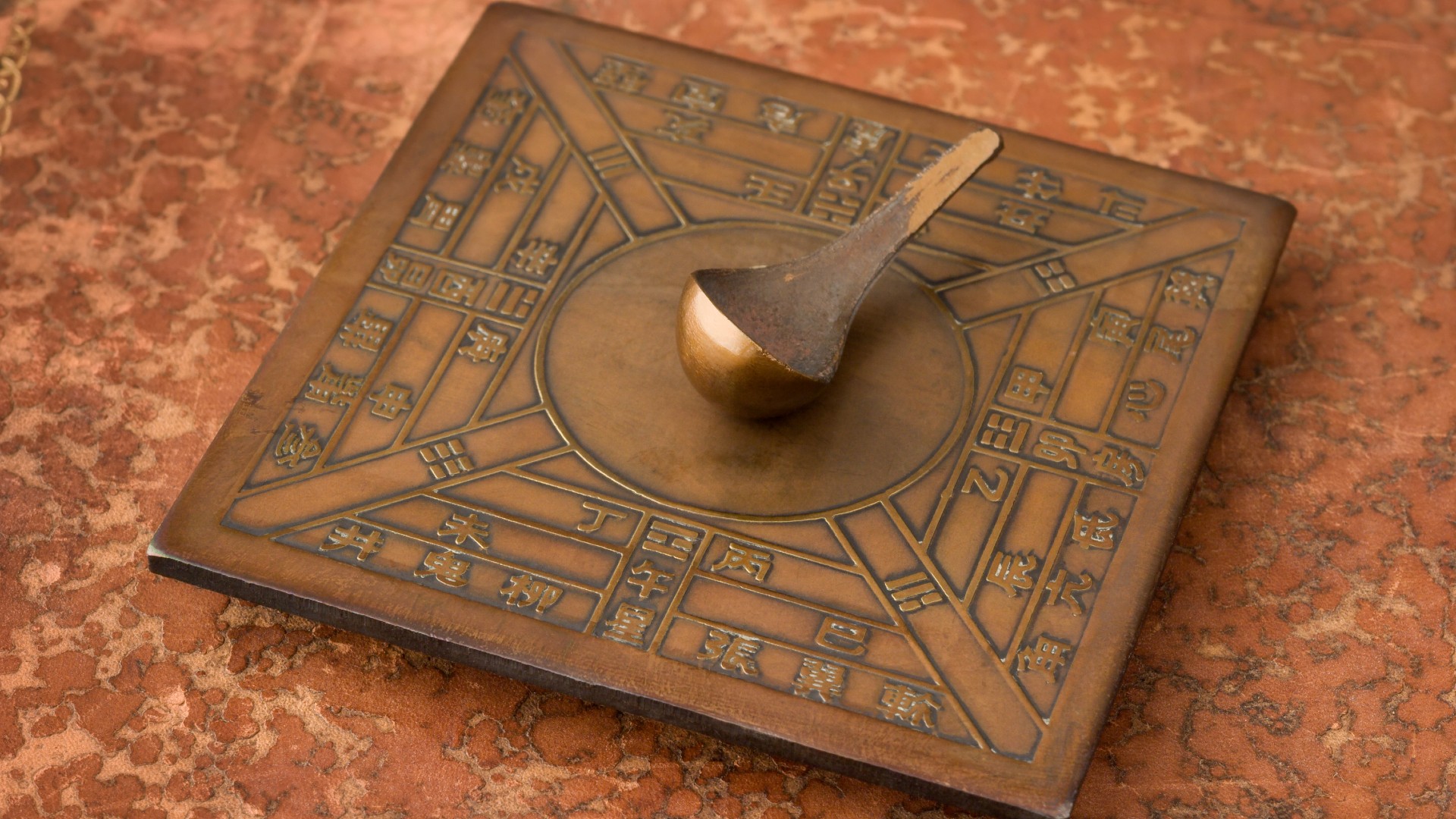
Ancient mariners used the stars for navigation, only this method didn't work during the solar day or on cloudy nights, making it dangerous to travel far from country.
The first compass was invented in China during the Han dynasty between the second Century B.C. and 1st Century A.D.; it was made of lodestone, a naturally-magnetized fe ore, the attractive backdrop of which they had been studying for centuries. Even so, information technology was used for navigation for the first time during the Song Dynasty, betwixt the 11th and 12th centuries,
Presently after, the applied science to the West through nautical contact. The compass enabled mariners to navigate safely far from state, opening up the world for exploration and the subsequent development of global trade. An instrument still widely used today, the compass has transformed our knowledge and understanding of the Earth forever.
The printing press
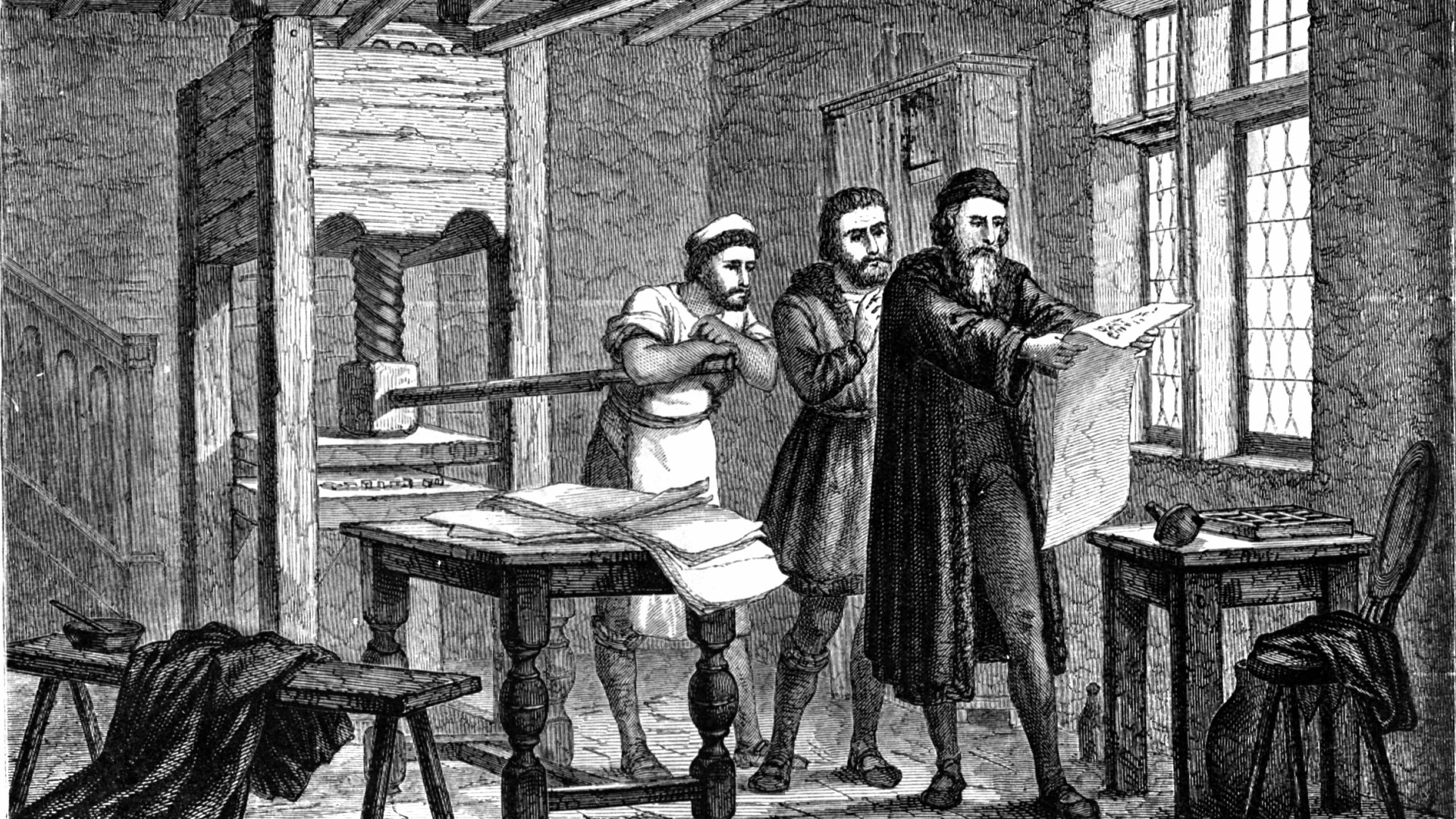
High german inventor Johannes Gutenberg invented the press printing sometime betwixt 1440 and 1450. Key to its development was the hand mold, a new molding technique that enabled the rapid creation of large quantities of metal movable type. Though others before him — including inventors in Red china and Korea — had developed movable type made from metal, Gutenberg was the first to create a mechanized procedure that transferred the ink (which he made from linseed oil and soot) from the movable blazon to paper.
With this movable blazon process, press presses exponentially increased the speed with which book copies could be made, and thus they led to the rapid and widespread broadcasting of knowledge for the kickoff time in history. In her book "The Press Revolution in Early Modern Europe" (Cambridge University Press, 2012), late historian Elizabeth Fifty. Eisenstein wrote, "printers' workshops would be institute in every important municipal middle by 1500." It has been estimated that up to twenty million volumes had been printed in Western Europe by 1500, although Eisenstein estimates that it was around eight million.
Among other things, the printing press permitted wider access to the Bible, which in turn led to alternative interpretations, including that of Martin Luther, whose "95 Theses" a document printed by the hundred-grand sparked the Protestant Reformation.
The internal combustion engine
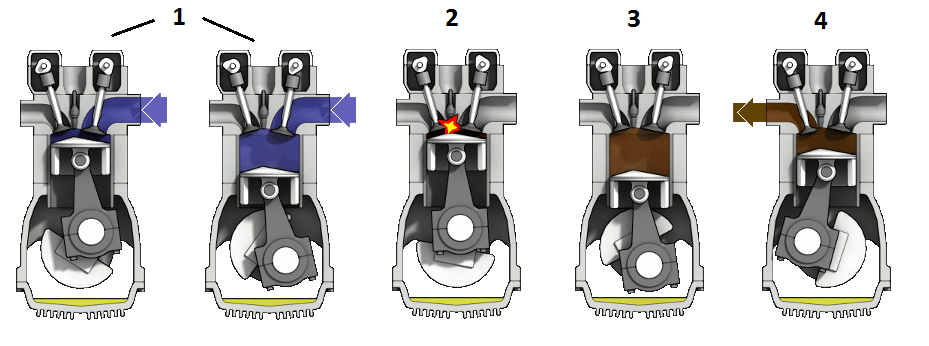
In these engines, the combustion of fuel releases a high-temperature gas, which, as it expands, applies a force to a piston, moving it. Thus, combustion engines convert chemical energy into mechanical work. Decades of engineering by many scientists went into designing the internal combustion engine, which took its (substantially) modern course in the latter one-half of the 19th century. The engine ushered in the Industrial Age, as well as enabling the invention of a huge variety of machines, including modern cars and aircraft.
Pictured are the operating steps of a 4-stroke internal combustion engine. The strokes are as follows: ane) Intake stroke — air and vaporised fuel are drawn in. 2) Compression stroke - fuel vapor and air are compressed and ignited. 3) Power stroke — fuel combusts and the piston is pushed downwards, powering the machine. 4) Exhaust stroke — exhaust is driven out.
The telephone
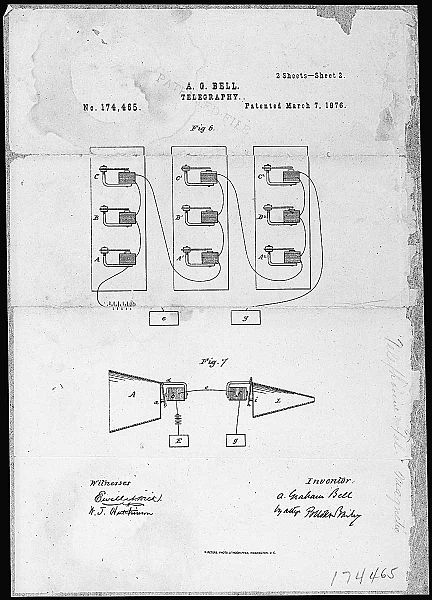
Several inventors did pioneering work on electronic voice transmission - many of whom later filed intellectual belongings lawsuits when telephone use exploded - just it was Scottish inventor Alexander Graham Bell who was the first to be awarded a patent for the electric telephone on March seven 1876 (his patent drawing is pictured above). Three days afterward, Bell made the outset phone call to his assistant, Thomas Watson, proverb "Mr Watson, come hither — I want to come across y'all," co-ordinate to writer A. Edward Evenson in his volume, "The Telephone Patent Conspiracy of 1876: The Elisha Grey-Alexander Bong Controversy and Its Many Players" (McFarland, 2015).
Bell's inspiration for the telephone was influenced by his family. His father taught spoken communication elocution and specialized in teaching the deaf speak, his female parent - an accomplished musician - lost her hearing in later life and his wife Mabel, who he married in 1877, had been deaf since the historic period of v, according to Evenson. The invention quickly took off and revolutionized global business and advice. When Bell died on August ii, 1922, all telephone service in the United States and Canada was stopped for one minute to accolade him.
The light bulb
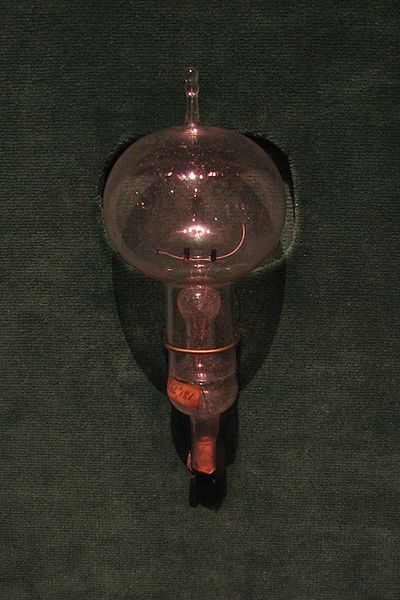
The invention of the light seedling transformed our world by removing our dependence on natural lite, assuasive u.s.a. to be productive at any fourth dimension, day or night. Several inventors were instrumental in developing this revolutionary engineering throughout the 1800s; Thomas Edison is credited as the main inventor considering he created a completely functional lighting system, including a generator and wiring as well as a carbon-filament seedling like the i above, in 1879.
Besides as initiating the introduction of electricity in homes throughout the Western earth, this invention also had a rather unexpected issue of irresolute people's sleep patterns. Instead of going to bed at nightfall (having null else to exercise) and sleeping in segments throughout the night separated by periods of wakefulness, we now stay up except for the 7 to 8 hours allotted for sleep, and, ideally, nosotros sleep all in i go.
Penicillin
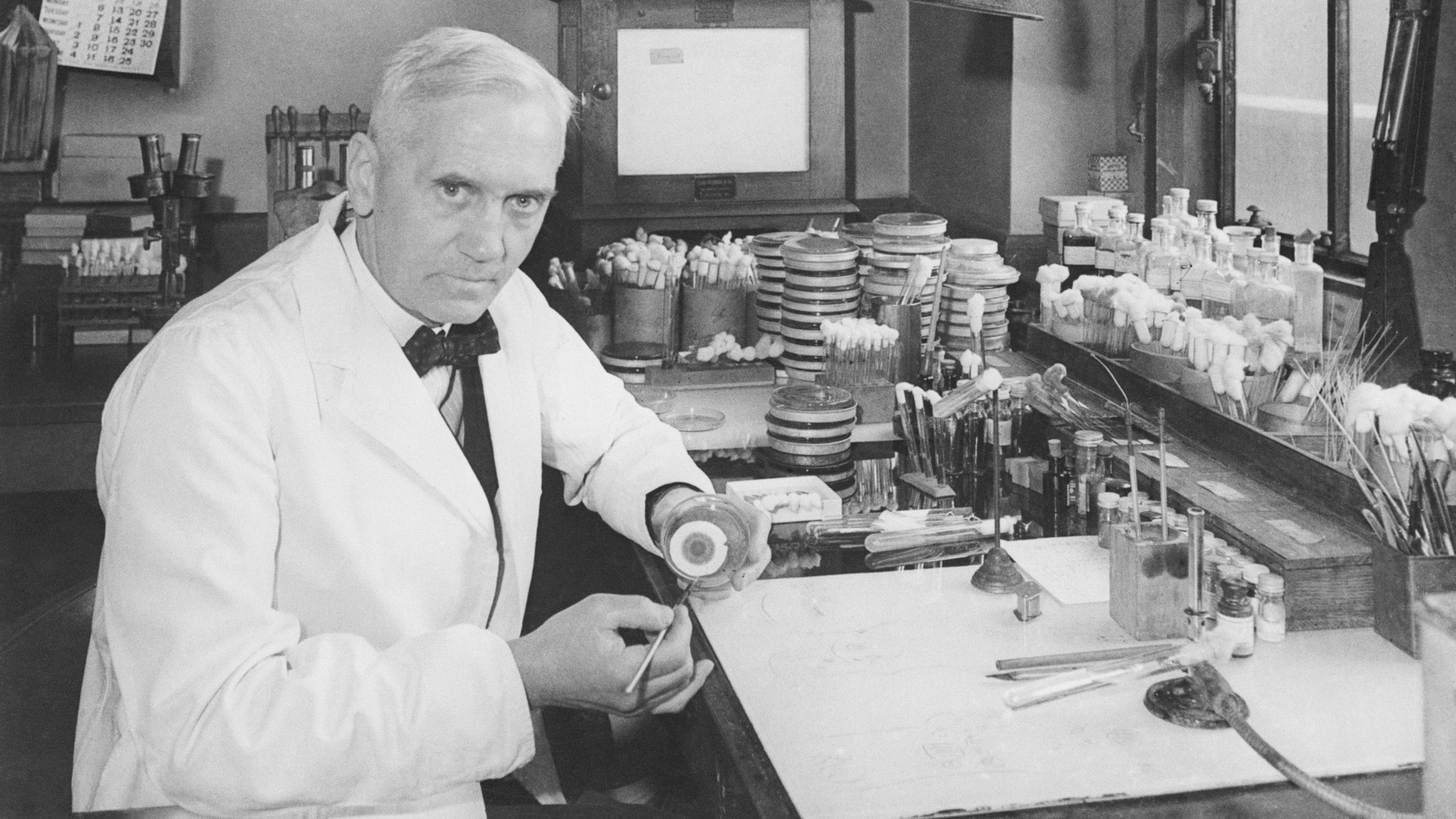
Information technology'southward one of the about famous discovery stories in history. In 1928, the Scottish scientist Alexander Fleming noticed a bacteria-filled Petri dish in his laboratory with its chapeau accidentally ajar. The sample had become contaminated with a mold, and everywhere the mold was, the bacteria was dead. That antibiotic mold turned out to be the mucus Penicillium, and over the adjacent 2 decades, chemists purified it and developed the drug penicillin, which fights a huge number of bacterial infections in humans without harming the humans themselves.
Penicillin was being mass-produced and advertised by 1944. This affiche fastened to a curbside mailbox brash World State of war 2 servicemen to take the drug to rid themselves of venereal affliction.
Most 1 in 10 people have an allergic reaction to the antibiotic, co-ordinate to a report published in 2003 in the periodical Clinical Reviews in Allergy and Immunology; nevertheless, nigh of those people become on to be able to tolerate the drug, researchers said.
Related: What causes allergies?
Contraceptives
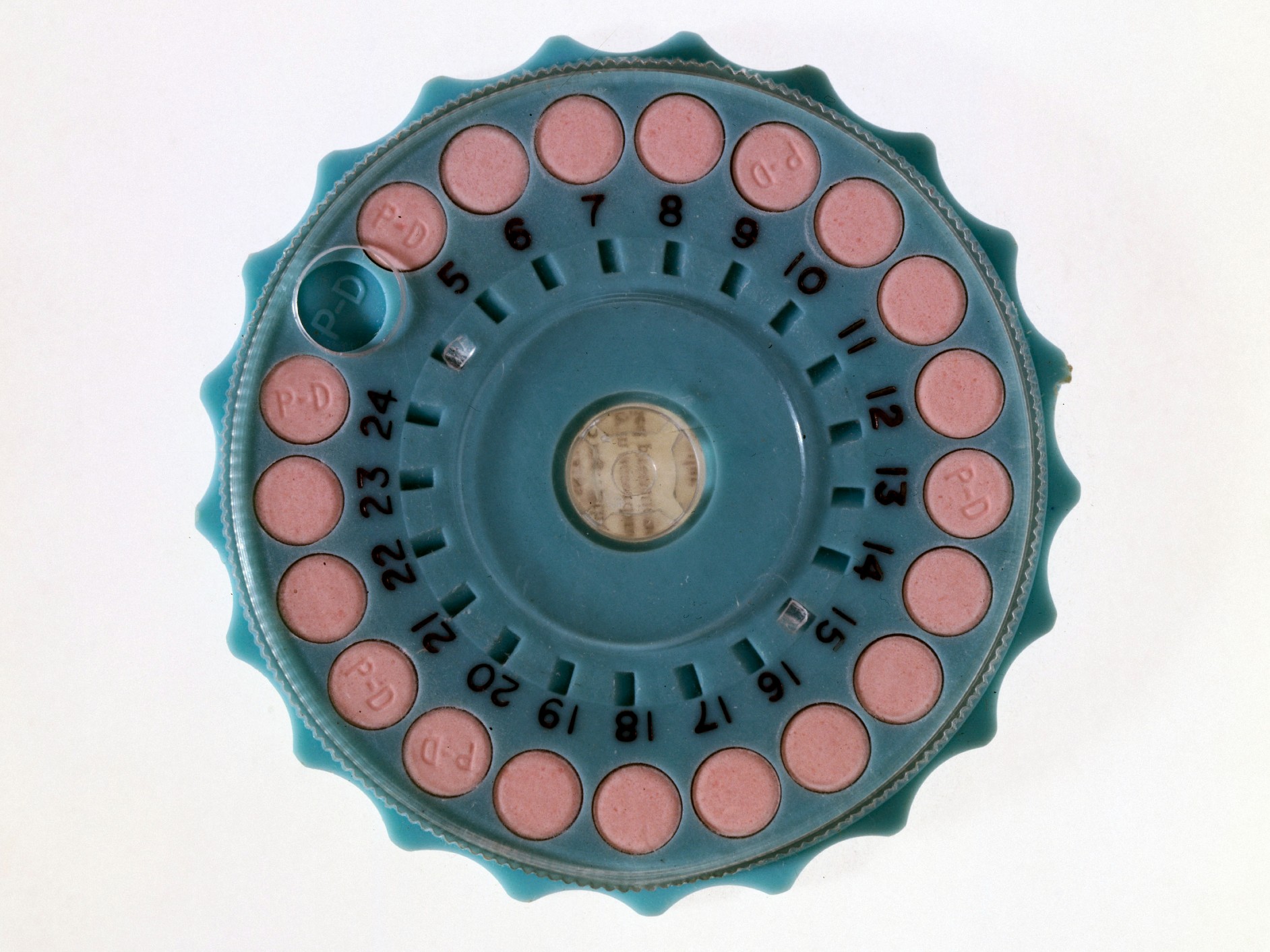
Not merely have nascence control pills, condoms and other forms of contraception sparked a sexual revolution in the developed world by assuasive men and women to have sexual practice for leisure rather than procreation, they have too drastically reduced the average number of offspring per woman in countries where they are used. With fewer mouths to feed, mod families have achieved higher standards of living and tin can provide ameliorate for each child. Meanwhile, on the global scale, contraceptives are helping the human being population gradually level off; our number will probably stabilize by the end of the century. Certain contraceptives, such as condoms, likewise adjourn the spread of sexually transmitted diseases.
Natural and herbal contraception has been used for millennia. Condoms or 'sheaths' have existed in one form or some other since ancient times, according to scholar Jessica Borge in her book "Protective Practices: A History of the London Rubber Visitor and the Condom Business" (McGill-Queen'due south University Printing, 2020), with the rubber condom developed in the 19th century. Meanwhile, the FDA approved the first oral contraceptive pill in the United States in 1960 and by 1965, more than 6.five meg American women were on the pill, according to author Jonathan Eig in his book, "The Nativity of the Pill: How Four Pioneers Reinvented Sexual activity and Launched a Revolution" (W. W. Norton & Visitor, 2015).
Scientists are continuing to brand advancements in nascency control, with some labs even pursuing a male form of "the pill." A permanent nativity-control implant called Essure was approved by the Food and Drug Administration in 2002, though in 2016, the FDA warned the implant would need stronger warnings to tell users virtually serious risks of using Essure.
Related: 7 surprising facts about the pill
The Internet

The internet is a global organisation of interconnected computer networks that is used by billions of people worldwide. In the 1960s, a team of computer scientists working for the U.South. Defence Department'south ARPA (Advanced Research Projects Agency) built a communications network to connect the computers in the bureau, called ARPANET, the predecessor of the internet. It used a method of data transmission chosen "bundle switching", developed by estimator scientist and team member Lawrence Roberts, based on prior work of other estimator scientists.
This technology was progressed in the 1970s past scientists Robert Kahn and Vinton Cerf, who developed the crucial communication protocols for the internet, the Manual Command Protocol (TCP) and the Internet Protocol (IP), according to computer scientist Harry R. Lewis in his book "Ideas That Created the Futurity: Classic Papers of Calculator Science" (MIT Press, 2021). For this, Kahn and Cerf are oftentimes credited as "inventors of the internet".
In 1989, the cyberspace evolved farther thanks to the invention of the Earth Broad Web by computer scientist Tim Berners-Lee while working at CERN (The European Organization for Nuclear Inquiry). According to CERN, "the bones idea of the WWW was to merge the evolving technologies of computers, data networks and hypertext into a powerful and easy to use global information system." The development of the WWW opened up the earth of the internet to everybody and continued the world in a way that information technology had never been before.
Related: Inventor of Www snags computer scientific discipline's top prize
Source: https://www.livescience.com/33749-top-10-inventions-changed-world.html
Posted by: bohntheirried.blogspot.com


0 Response to "How Can One Type Of Rock Change To Another"
Post a Comment